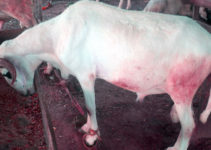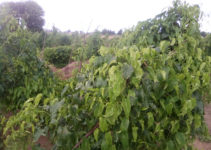Feather Eating and Pecking, How to prevent and manage it.

The beauty and joy of any poultry farmer is waking up every morning to look at your well feathered. And colorful active birds jumping around signaling your arrival and expressing their state of good health.
Nothing could be more devastating, frustrating than looking at your birds helplessly pecking and aggressively eating their feathers.
It is therefore imperative for you as a farmer. To make deliberate effort in preventing and eliminating this depressing behavior in your flock.
Importance of feather cover for your chickens.
- Beauty to behold, well-feathered bird makes a good pet, very attractive especially for children and chicken pet lovers alike.
- Temperature regulation Feathers are involved in thermoregulation and play an important role in protecting against outside weather, and physical injuries.
- Protection from sunburn.
- Dustbathing and preening.
- Feathers are used for flight and buoyancy, as seen in waterfowl, turkey, guinea fowl, etc.
- Good feather cover reduces the cost of feeding as less feed is required to keep the body worm.
- Good feather cover is used for sexual display to attract the female species during mating in birds such as turkey and peacock.

well feathered chickens
Causes of Feather Eating and Pecking
The following is the possible causes of feather eating and pecking:
- Pulling out of feathers to eat. This can be a result of poor nutrition. Especially laying hen’s inadequate protein and fiber in their diet could trigger this behavior to make up for the inadequacies.
- Vent pecking and cannibalism. It can cause feather loss in any body area, particularly the back and rump. Unhealthy birds or birds that are under stressful conditions may also exhibit feather loss.
- Stressful conditions such as exposure to direct sunlight. Chicken houses poorly built without verandah to shield sunlight can lead to the discomfort of the birds. This can trigger aggressive feather pecking.
READ: Poultry farming Why some people fail
- Heat, cold, disease, and lack of adequate amounts of feed and water can result in feather loss and poor feather quality with your birds.
- Inability to exhibit natural behavior, common with birds kept in cages and confinement. Without litter material for dust-bathing, perching exercise, etc. free-range birds are less prone to feather pecking and eating.
- Ensuring and improving bird health benefits production rates. Poor health (e.g. injuries, red mite, and worm burdens) is also associated with increased feather pecking.
- Providing quality litter is vital for foraging behavior. And for the birds to exhibit natural behavior such as dust bathing. Feather pecking is thought to be redirected foraging or ground pecking behavior as a result of frustration.
- The absence of good litter or capped litter causes frustration and the birds then need to find something else to forage on. To relieve its frustration and boredom this situation could lead to feather eating and pecking.
- Sudden or extreme variations in house climate can be a source of stress to birds. Recent work has found that the more variation in temperature within the house the more likely injurious pecking was to occur. Climatic conditions and variation can have a big effect on the evenness of the flock.
- Molting is a natural process whereby laying birds will cease egg production and lose feathers from their neck. Breast and back areas for a few weeks to a few months. Molting occurs most often in natural environments where the birds are exposed to natural day lengths.
- Other causes of feather loss can include damage to feathers by equipment in the house, especially on the head/neck, and high levels of egg production.
- Poor protein content in their feed could result to feather eating as the birds would want to make up for the protein by eating each other’s feathers especially in laying hens.

Overcrowding and poor litter could aggravate stress and feather eating.
READ: Layer farming, and how to do it the right
Good Practices to Improve Feather Cover
- Housing facilities, provide good house design and layout to allow birds to move around and access facilities easily.
- Ensure perch height and other equipment to avoid risk of vent pecking.
- Provide ample space to help minimize competition, feeders, drinkers, nest boxes. Prevent equipment causing wear to feathers.
- Placement in laying house, minimize pullet stress before, during and after transfer.
- Avoid mixing established groups at any stage of production.
- Allow access to litter as early as possible, at least within the first 3 days.
- Chickens have instincts or inbuilt need to forage for food even when given a complete feed ratio. It is very important to give them plenty to peck at to keep their attention away from pecking each other.

Perches will help in reducing pecking
you might like to READ: Coccidiosis Disaeas of the lazy farmer
- Keeping them busy. Provide items inside the chicken shed to keep birds interested and active. items such as perches with areas of varying heights, aerated breeze blocks on the slats, knotted rope, hang leaves and vegetables, plastic bottles, sandboxes, tires, straw/shaving bales, etc.
- Routinely inspect your birds calmly and frequently to help them reduce stress and fearfulness among your flock. with good stock keeping skills, problems can be easily recognized and managed as quickly as possible and urgent action taken to avoid a depressing situation.
- Used mashed feed especially for layers this increases more activity and time of feeding scatter feed/grit on litter.
- Strive to always maintain dry, friable litter at all times occasionally rake and add fresh litter. Use good absorbent litter material.
- Always inspect water drinkers, for leakages, breakages and replace promptly to avoid wet and damp litter.
- Health and bio-security, prevent and control disease and pest challenges including red mite. One of the commonest causes of injurious pecking is “change” to make any changes gradually especially in housing, facilities, and feed.

When birds are allowed to exhibit natural behaviors such as dust-bathing, these help in reducing stress
READ ALSO: How to ensure good hygiene and biosecurity in your poultry farm
- Observe your birds closely after sudden changes in weather conditions, sudden noises or bright light.
- Ensure adequate fiber in their diet, feed that is poor in fiber can increase the level of feather pecking. And eating as the birds will want to replace the inadequate fiber in their diet with feathers. By adding fiber to the diet this may simply increase the time spent eating, reducing the time available for the birds to start feather pecking.
- Avoid mixing chicks from different batches or different breeds. studies have shown that birds with different age and feather colors kept in confinement tend to peck at each other.
- Provide adequate protein in their diet. Protein is an essential element of the diet and several studies have highlighted a link between inadequate dietary protein and injurious pecking at lay.
- Good layers used a lot of protein in producing eggs. As a result feed with poor protein content could affect feather cover. And encourage feather eating and pecking as the birds will always want to improvise.
You might enjoy READING: TURKEY, the benefit and beauty of adding this wonderful bird to your homestead flock.
Conclusion
When it comes to prevention and reduction of feather eating and pecking the welfare of the birds is to be taken with utmost seriousness. This includes their housing facility, quality feed, and disease control.
The production environment should be constructed in such a way and manner that any stressor that could aggravate feather eating is eliminated. And reduced to the barest minimum such as the introduction of perches in their shed.
Providing verandah for shade, adequate ventilation, good and quality absorbent litter material for dust bathing and preening, helping the birds to exhibit natural behavior.






